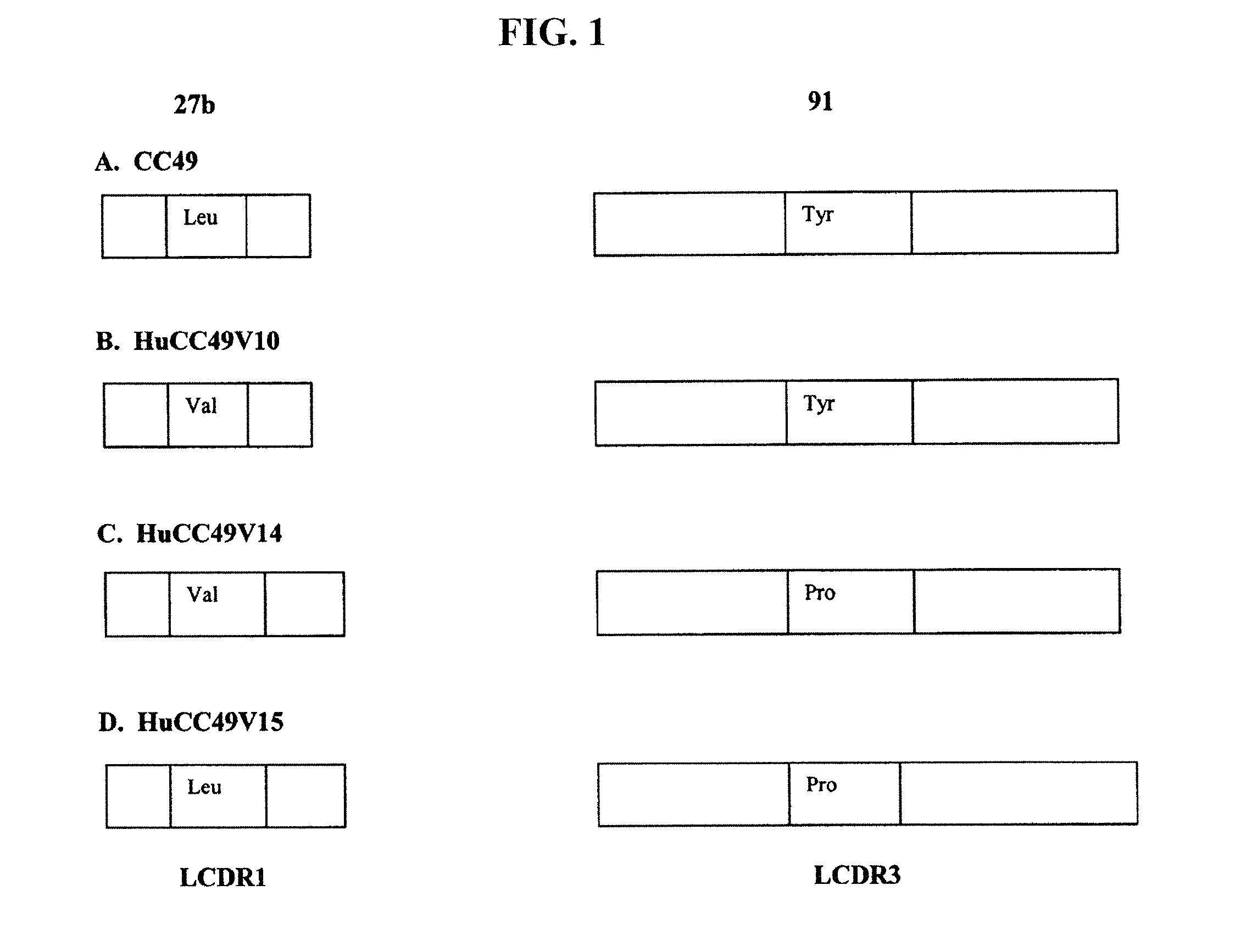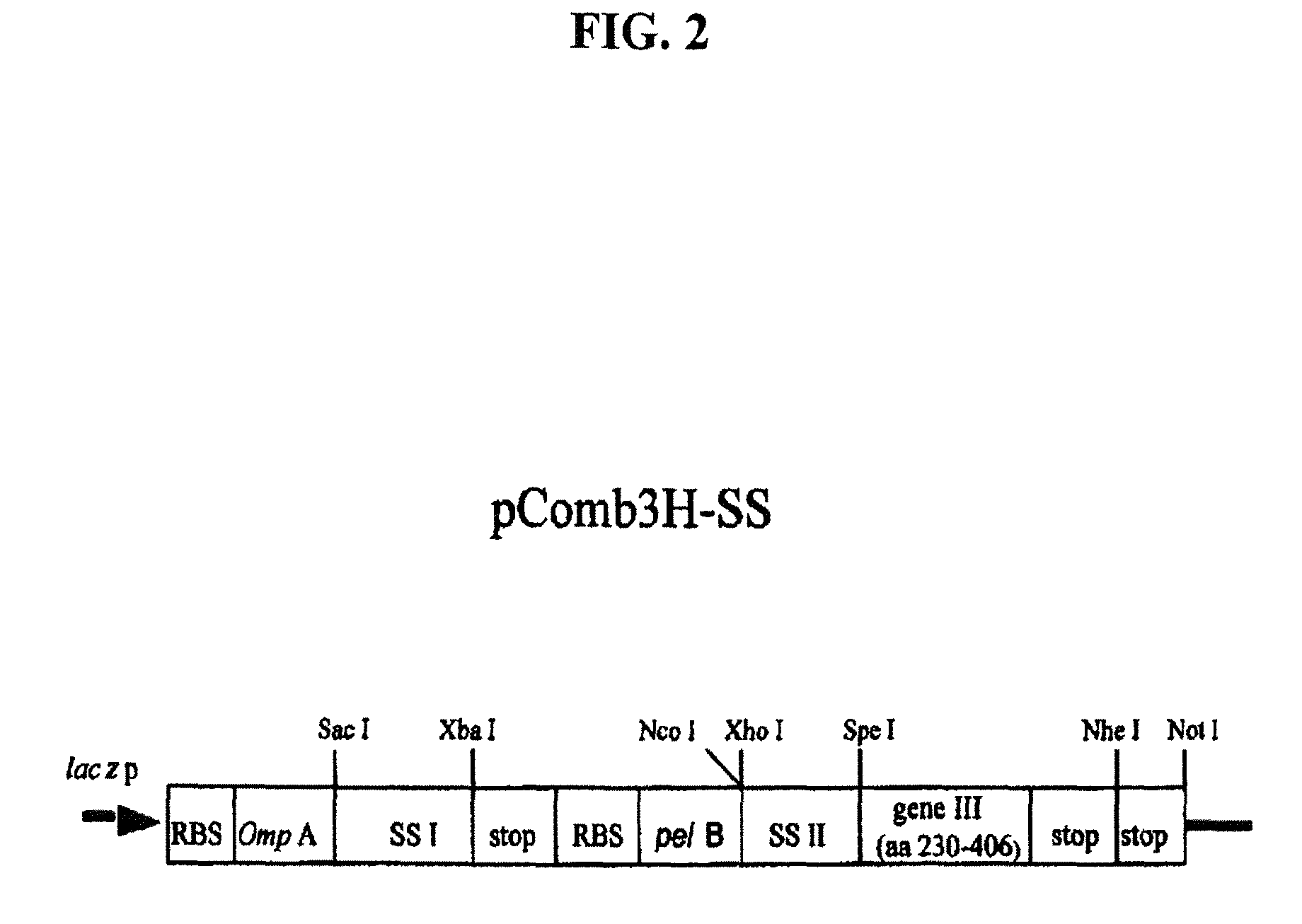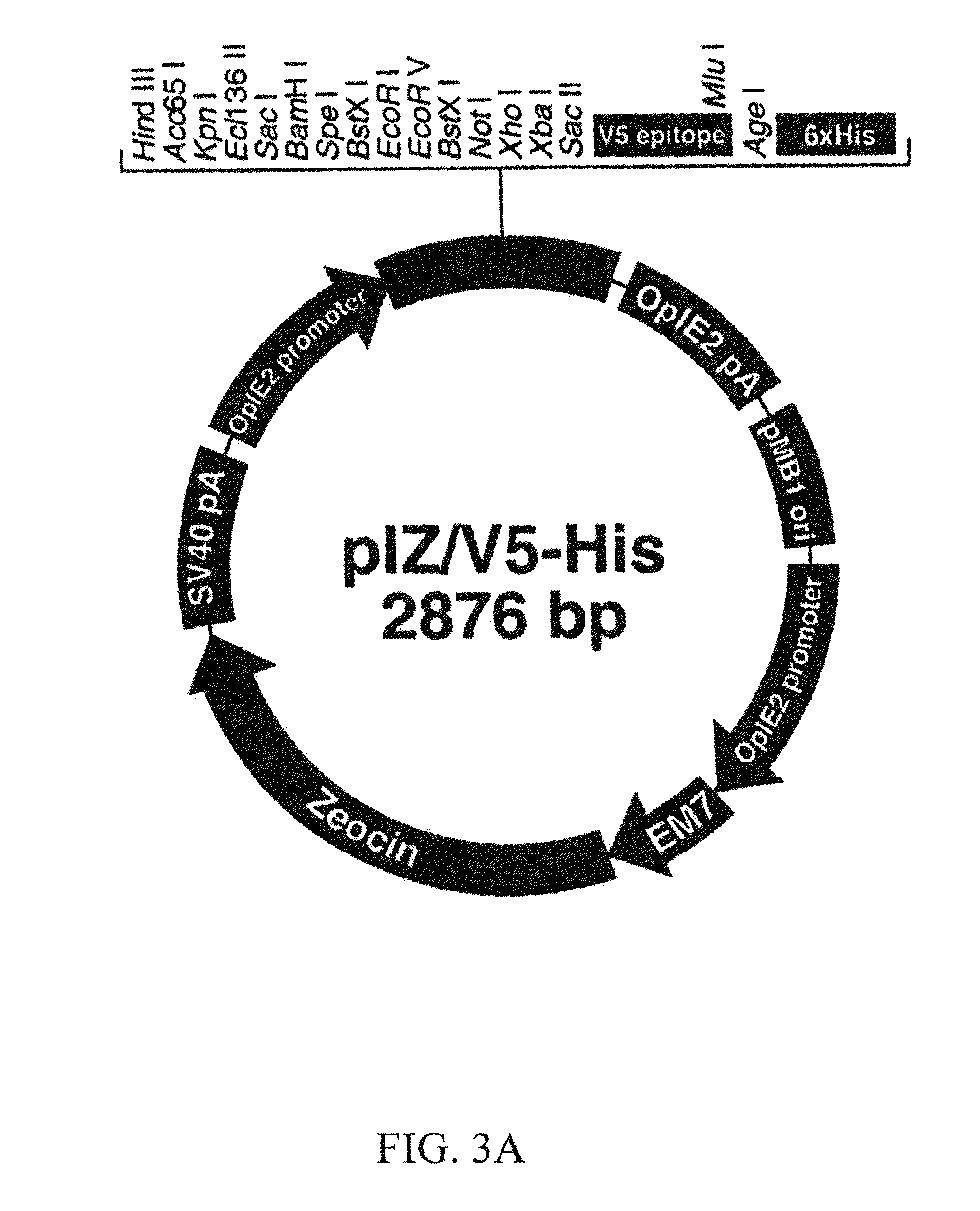Methods to determine immunogenicity of humanized anti-tag 72 CC49 antibodies
a humanized anti-murine antibody and immunogenicity technology, applied in the field of humanized monoclonal antibodies, can solve the problems of limited clinical utility of the cc49 monoclonal antibody, and the development of a human anti-murine antibody response, and achieve the effect of minimal immunogenicity and high binding affinity
- Summary
- Abstract
- Description
- Claims
- Application Information
AI Technical Summary
Benefits of technology
Problems solved by technology
Method used
Image
Examples
example 1
Construction of the Variant HuCC49V10 Antibody Phage Library
[0147]A phage display library of isolates was derived from the humanized CC49 variant HuCC49V10 (Tamura et al., J. Immunol., 164: 1432, 2000) by the mutagenesis of the LCDR3 and the HCDR2, the two CDRs that were earlier shown to be the targets of the patient's anti-variable region response. Primer-induced mutagenesis was used to replace the targeted SDRs of the two CDRs (Table 1) with all possible residues located at the corresponding positions in human antibodies (Table 3). A dual step PCR (Landt et al., Gene 96: 125, 1990) was used for DNA amplification.
[0148]
TABLE 3Residue substitutions in the libraryEncoded aaL-CDR3Position 89:R, L, N, K. M, H, Q, I, SPosition 91:S, Y, R, A, G, H, T, C, P, D, NPositions 92, 93, 94, 96:S, R, L, V, A, G, T, P, Y, F, D, N, I, W, H, E,L, Q, M, CH-CDR2Positions 50, 52, 53, 58:S, R, L, V, A, G, T, P, Y, F, D, N, I, W, H, E,L, Q, M, CPosition 54:S, T, D, G, F, N, R, L, I, A, V, Y, C, H, PPosit...
example 2
Selection of TAG-72-Binding HuCC49V10 Variants and Production of Soluble Fabs
[0156]The phage library was screened and enriched for isolates binding to TAG-72. To that end, the library was subjected to multiple (7) rounds of panning. During each round, variants that specifically bind to TAG-72 were selected and amplified. The selected variants were used as a source of phagemids that were isolated and genetically manipulated en mass to express soluble Fab molecules.
Panning
[0157]For panning, a modification of the procedure that has been described earlier (Parmley and Smith Gene 73:305, 1988; Barbas et al., Proc. Natl. Acad. Sci. USA 88: 7978, 1991) was used. During each round of panning, variants that specifically bind to TAG-72 were selected and amplified. ELISA plates (Nalgene Nunc International, Rochester, N.Y.) were coated overnight at 4° C. with 50 μl of TAG-72 positive bovine submaxillary mucin (BSM) (Type 1-S; Sigma, St Louis, Mo.) in D-PBS with calcium and magnesium chloride (G...
example 3
Screening for High-Binding-Affinity Variants of HuCC49V10
[0160]Cell lysates from all 48 cultures of the XL-1Blue cells transformed by the Fab constructs of pComb3H lacking the gene III fragment were tested for the presence of Fab by ELISA and Western Blot analysis. The cell lysates that were found positive were then screened for binding to the TAG-72 positive BSM by Surface Plasmon Resonance (SPR).
ELISA
[0161]Supernatants from each of the 48 cell lysates were screened to detect Fab by ELISA assay that has earlier been described (Tamura et al., J. Immunol. 164:1432, 2000; Bei et al., J. Immunol. Methods 186: 245, 1995). Individual wells of the 96-well polyvinyl microtiter plates were coated with 0.1 μg (50 μl) of goat anti-human kappa (Southern Biotechnology Associate, Inc., Birmingham, Ala.). The plates were blocked with 5% BSA in PBS for 1 hour at 37° C. and then washed with 1% BSA in PBS. Fifty μl of the supernatant to be tested was loaded in each well. After a 1 hour incubation at...
PUM
| Property | Measurement | Unit |
|---|---|---|
| molar concentration | aaaaa | aaaaa |
| density | aaaaa | aaaaa |
| diameter | aaaaa | aaaaa |
Abstract
Description
Claims
Application Information
 Login to View More
Login to View More - R&D
- Intellectual Property
- Life Sciences
- Materials
- Tech Scout
- Unparalleled Data Quality
- Higher Quality Content
- 60% Fewer Hallucinations
Browse by: Latest US Patents, China's latest patents, Technical Efficacy Thesaurus, Application Domain, Technology Topic, Popular Technical Reports.
© 2025 PatSnap. All rights reserved.Legal|Privacy policy|Modern Slavery Act Transparency Statement|Sitemap|About US| Contact US: help@patsnap.com



